2017 Toyota Land Cruiser: Car Seat Check

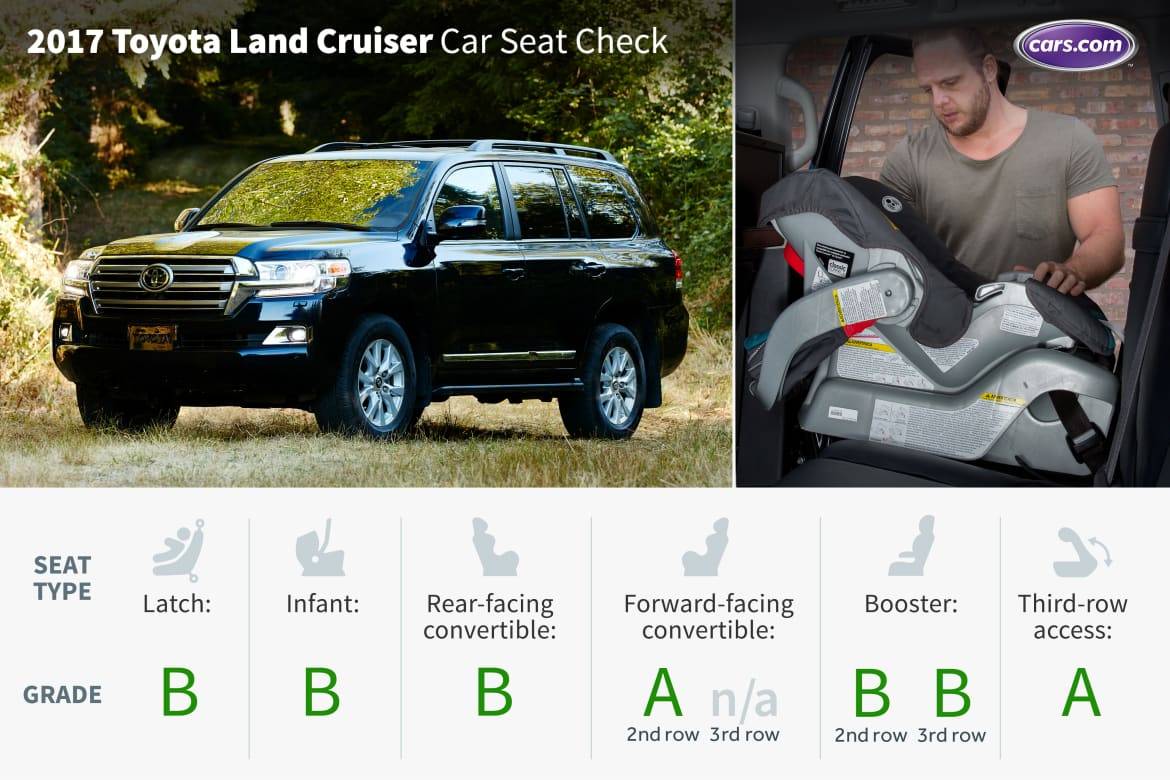
CARS.COM — The last time we performed a Car Seat Check on the Toyota Land Cruiser was for the 2013 model year, when the aptly named eight-seat SUV was a big, burly, spendy, fuel-guzzling behemoth with more off-road capability than most families likely needed. A light refresh for the 2016 model year didn’t change much, if anything, on any of those fronts. And although the Land Cruiser offers much in the way of comfort, backseat space remains troublesome in the 2017 version — and that impacts car-seat accommodation.
How many car seats fit in the second row? Three
How many car seats fit in the third row? Two
What We Like
- There are two sets of easy-connecting lower Latch anchors in the second row, under leather strips and Velcro-ed in place about 2 inches into the seat bight.
- Two of the second row’s three top tether anchors in the outboard seats are located about a third of the way down the seatback, easily accessible under hinged plastic flaps.
- The forward-facing convertible seat installed easily in the second row and sat level thanks to the flat seat cushions; we raised the head restraint to get the forward-facing convertible to sit flat.
- Our booster seat also installed easily in the second row and fit well after we raised the head restraint. The booster also fit well in the third row. All seat belt buckles are hinged and fold into the seat cushion — a superior setup to floppy buckles, which can be tough for kids to use independently.
- Third-row access is great thanks to second-row seats that tumble forward easily with the pull of a lever, leaving a wide pathway. Although the step-in height could be a challenge for kids, the running boards makes it easier to get in and out.
What We Don’t
- The second row’s middle top tether anchor is located at the base of the seat, under a difficult-to-remove plastic cover.
- The third row offers no lower Latch anchors or top tether anchors.
- Although the infant seat was easy to install, we had to move the front passenger seat forward a lot to accommodate it in the second row, putting our 5-foot-8-inch tester’s knees about a half-inch from the glove box; the same went for the rear-facing convertible.
- Removing the head restraint to get a good fit for our booster seat in the third row required, per the owner’s manual, a flathead screwdriver — making it a pain in the neck.
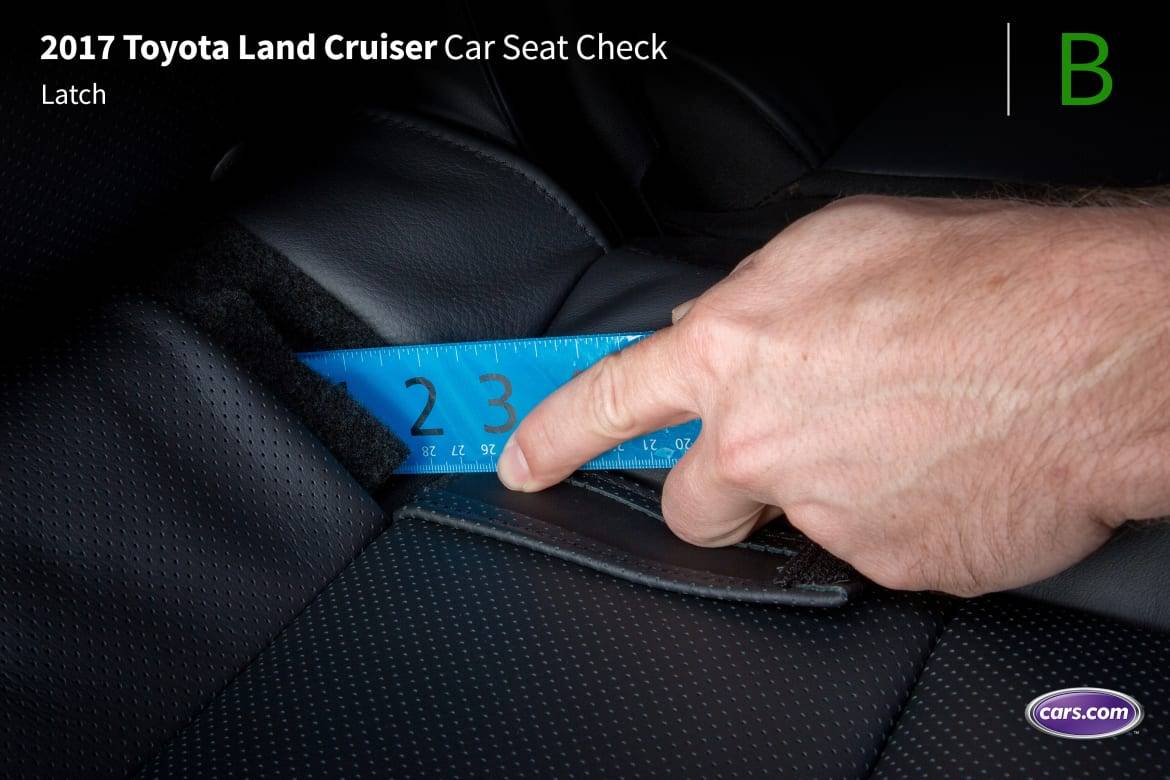
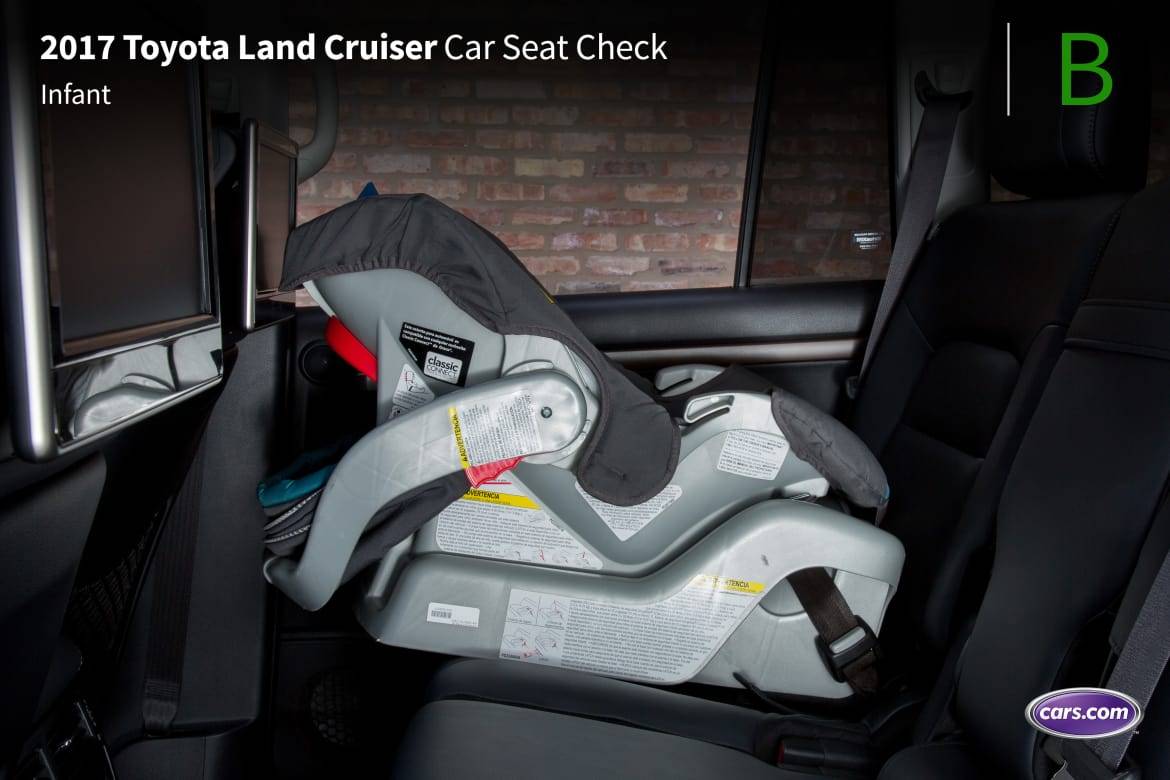
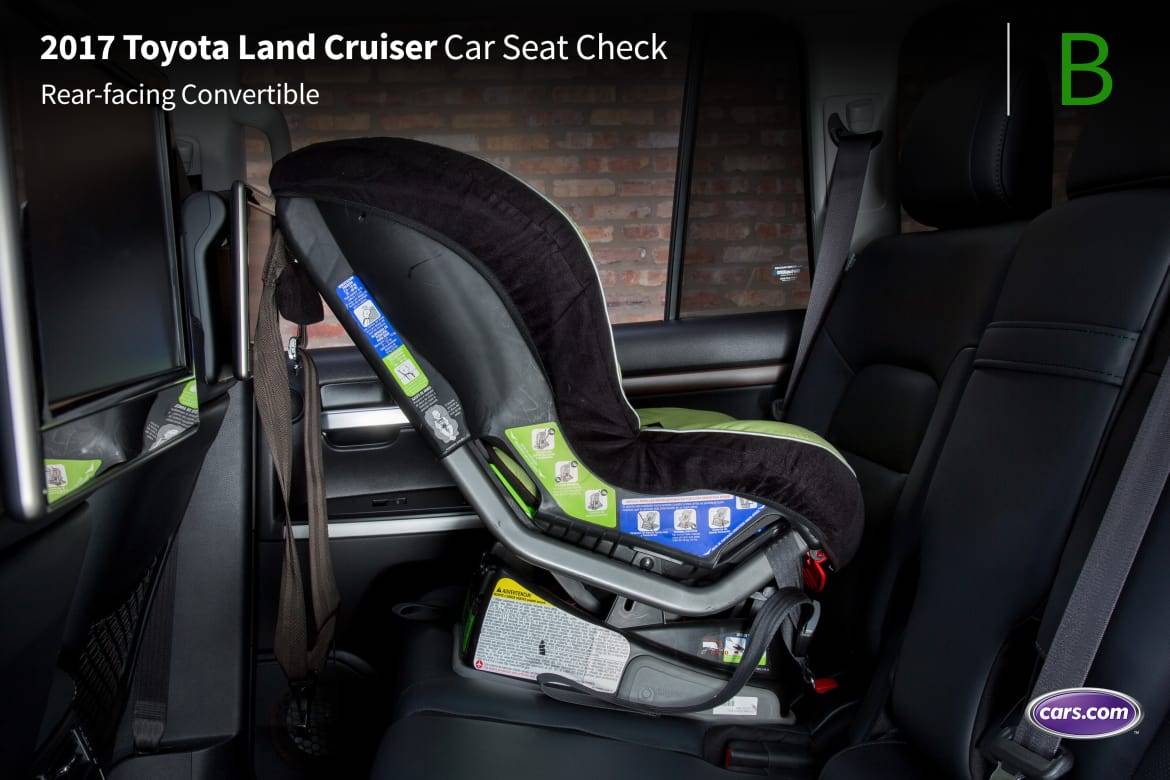
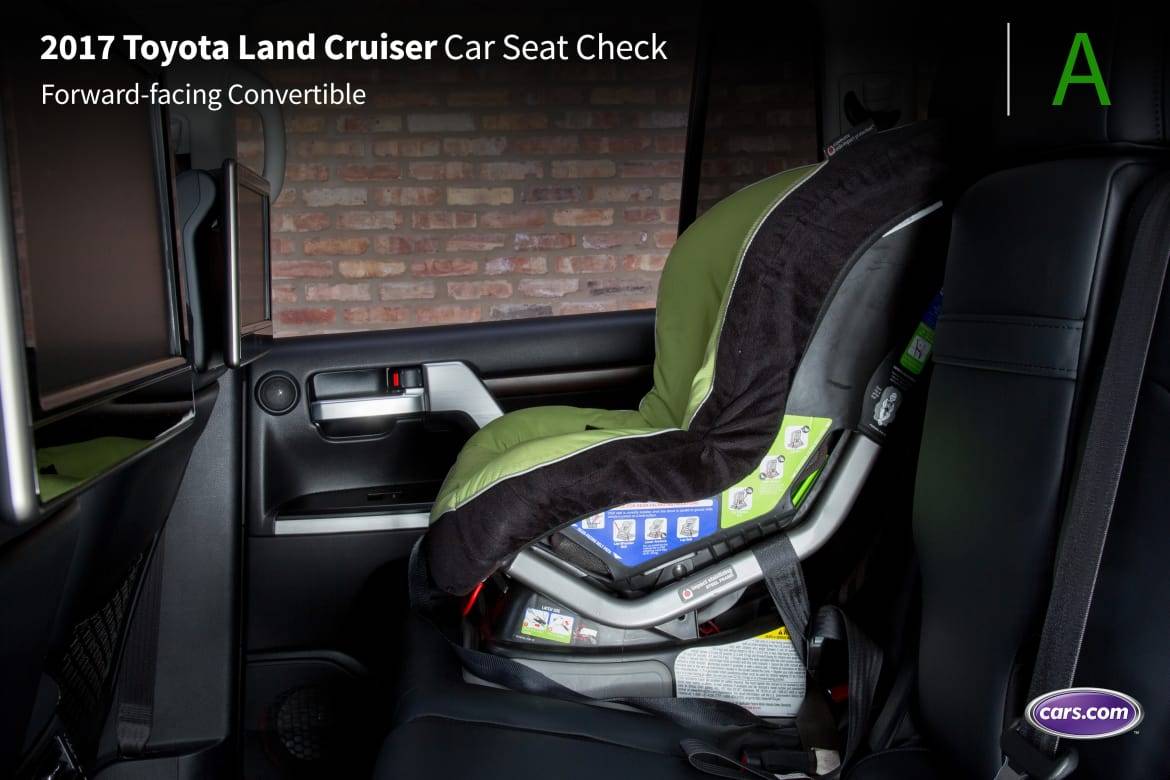
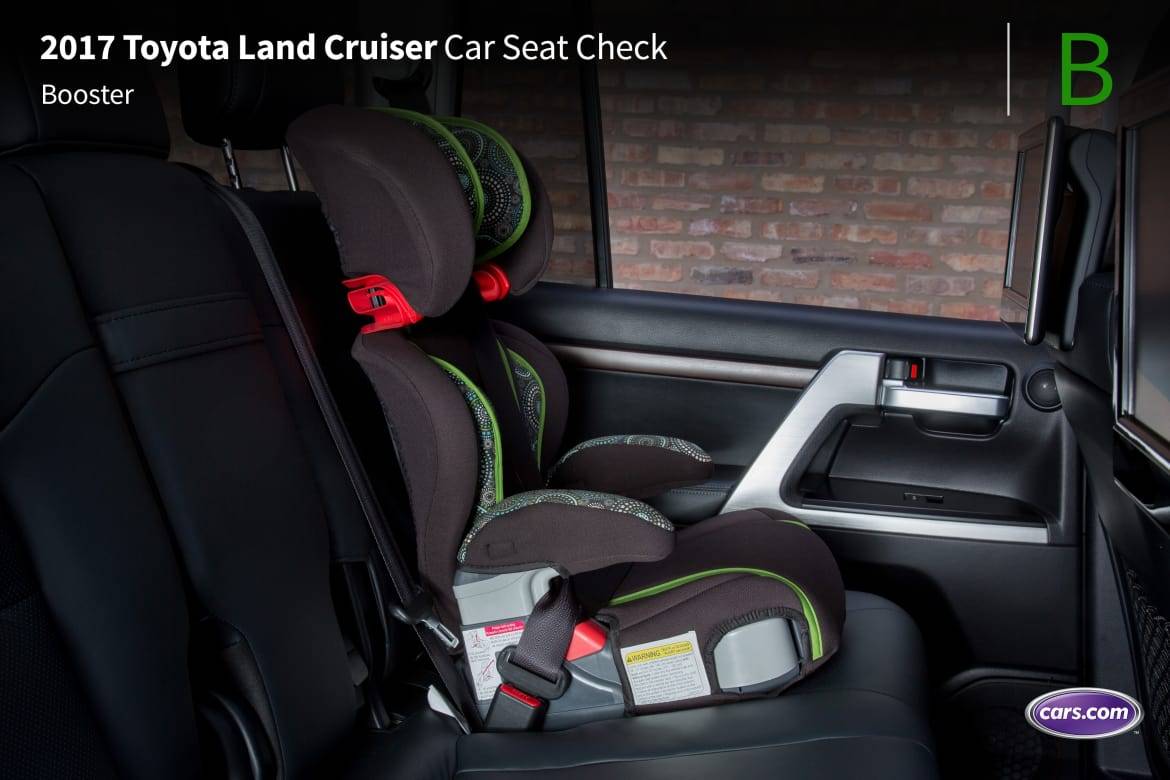
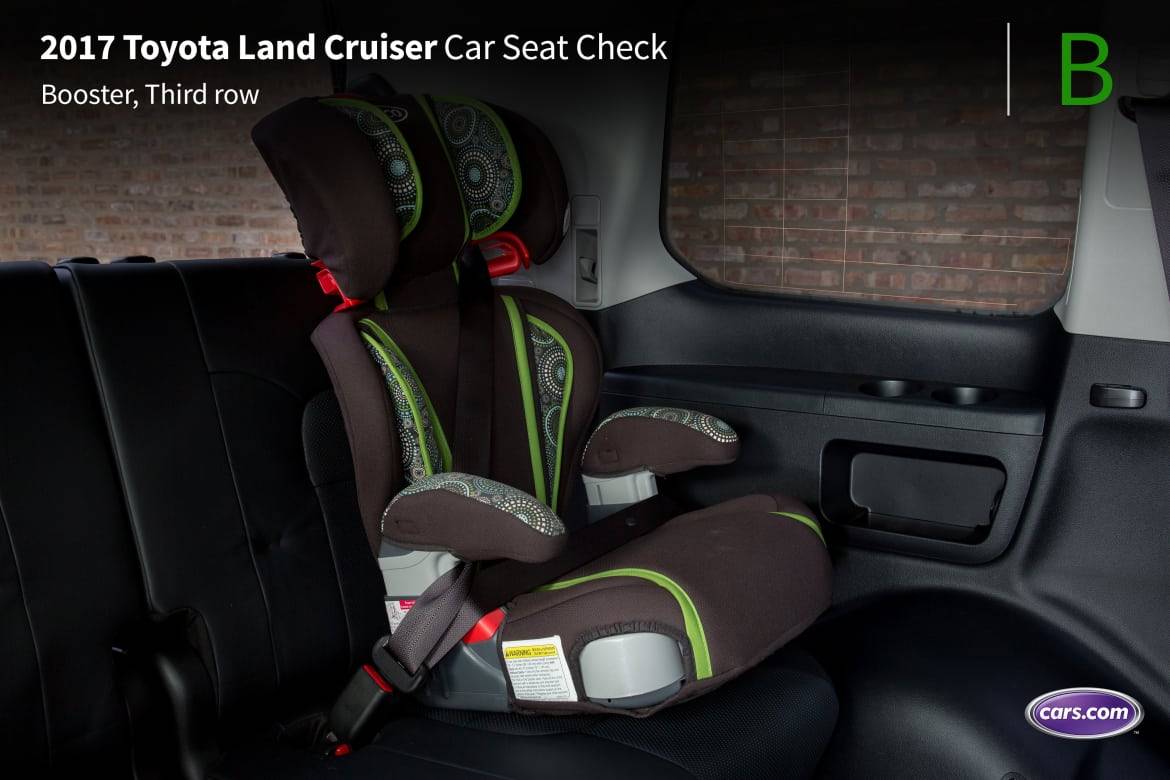
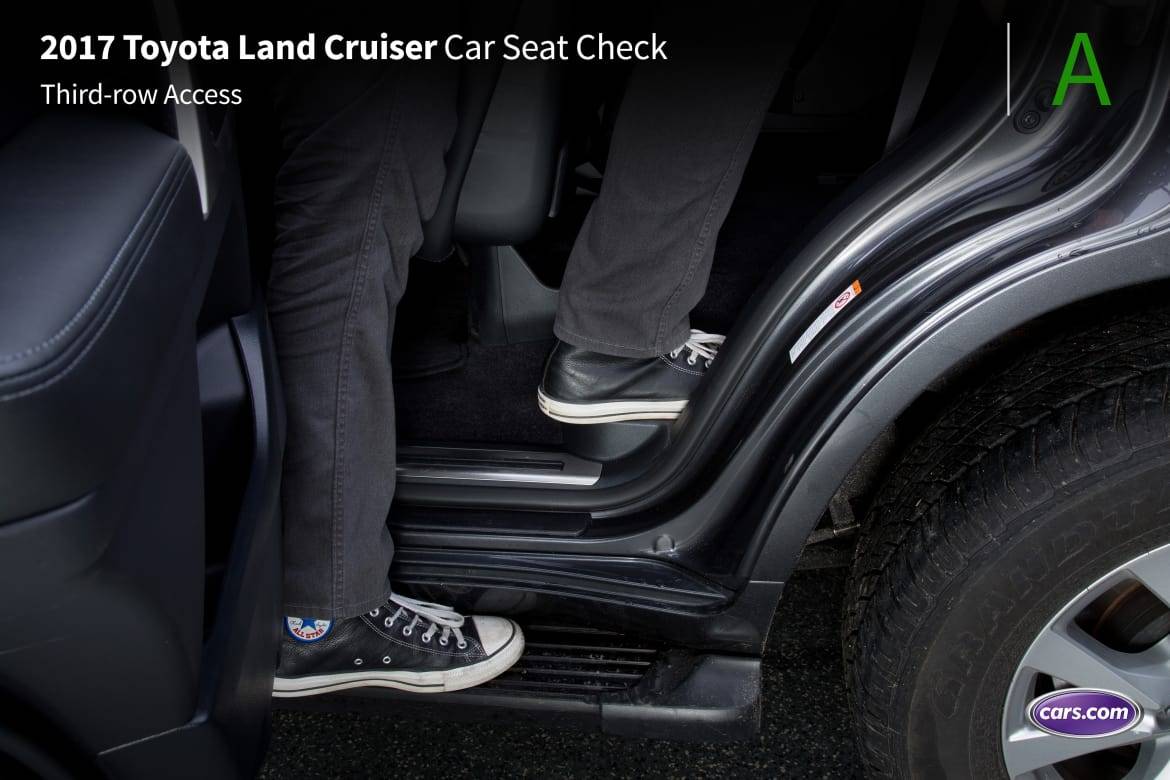







Grading Scale
A: Plenty of room for the car seat and the child; doesn’t impact driver or front-passenger legroom. Easy to find and connect to Latch and tether anchors. No fit issues involving head restraint or seat contouring. Easy access to the third row.
B: Plenty of room. One fit or connection issue. Some problems accessing third row when available.
C: Marginal room. Two fit or connection issues. Difficult to access third row when available.
D: Insufficient room. Two or more fit or connection issues.
F: Does not fit or is unsafe.
About Cars.com’s Car Seat Checks
Editors Jennifer Geiger, Jennifer Newman and Matt Schmitz are certified child safety seat installation technicians.
For the Car Seat Check, we use a Graco SnugRide Classic Connect 30 infant-safety seat, a Britax Marathon convertible seat and Graco TurboBooster seat. The front seats are adjusted for a 6-foot driver and a shorter passenger. The three child seats are installed in the second row. The booster seat sits behind the driver’s seat, and the infant and convertible seats are installed behind the front passenger seat.
We also install the forward-facing convertible in the second row’s middle seat with the booster and infant seat in the outboard seats to see if three car seats will fit; a child sitting in the booster seat must be able to reach the seat belt buckle. If there’s a third row, we install the booster seat and a forward-facing convertible. To learn more about how we conduct our Car Seat Checks, go here.
Parents should also remember that they can use the Latch system or a seat belt to install a car seat, and that Latch anchors have a weight limit of 65 pounds, including the weight of the child and the weight of the seat itself.

Former Assistant Managing Editor-News Matt Schmitz is a veteran Chicago journalist indulging his curiosity for all things auto while helping to inform car shoppers.
Featured stories











